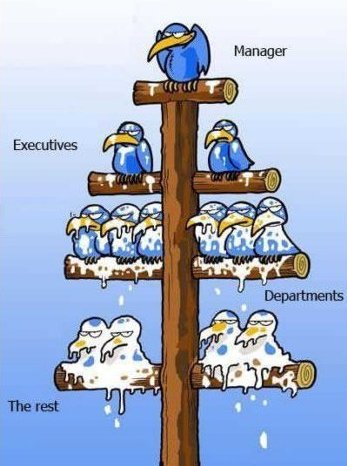
Wow! It’s almost 30 years since Ken Blanchard (Leadership and the One Minute Manager 1985) and, 30 years on they are more common than ever.
What is?
You know, the seagull manager—they fly in, hover about squawking and generally making their presence felt, indiscriminately let you have it from a great height, pinch your chips, squawk and fly off again, leaving you to clean up after them. Happy Days, heh!

As the cartoon shows, it’s not a lot of fun being in the seagull culture. Unless perhaps you’re the top gull.
So why do managers do it?
Very often seagulls are trying to impose their control over a situation. By flying in they can say that they have done their job, it was the “people on the ground” who “couldn’t perform”. You can’t blame little old Teflon coated me if the troops aren’t up to it.
The key Question here is:
Do seagull managers add any value to an organisation?
I think not, and here are four good reasons why:
- Culture: Seagulls have a detrimental impact on orgainisational culture
- Talent Retention: People join organisations, they leave bosses. The brightest and best won’t work for fools. They get up and go. This has a Big detrimental effect on talent retention.
- Non value adding activity: Seagulls consume considerable organisational time and resources which they don’t convert into value adding outputs/outcomes. Good resources in, rubbish out.
- Distraction – with all their squawking it is very easy for seagulls to divert attention away from the organisational mission.
NB: CAL has a range of short courses (online and workshops) designed to help managers grow their skills, knowledge and attributes to be worthy and effective managers.
CAL offers the Diploma of Leadership & Management (BSB51918) for those new to management, supervision and/or team leading and who want to learn how to become effective and efficient managers in a changing work environment.
